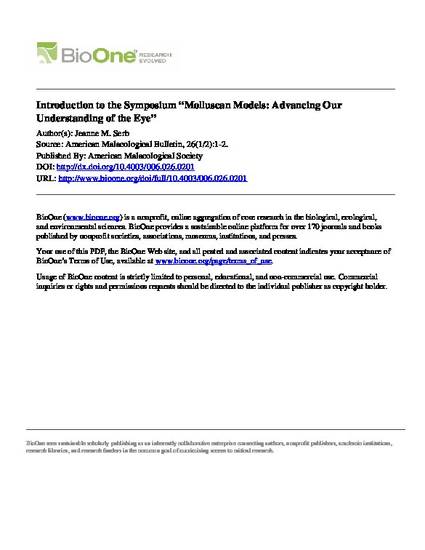
Since the time of Darwin, the eye has been a subject of evolutionary and comparative biologists alike who were intrigued by the structural complexity and morphological diversity of eyes in nature. Much of what we know about the eye—development, structure, physiology, and function—has been determined from only a handful of model organisms, specifically the mouse and the fly. One major phylum in particular, the Mollusca, has been underutilized in investigating the evolution and development of the eye. This is surprising as molluscs display a myriad of eye types, such as simple pit eyes without any apparatus to focus images, compound eyes that superficially resemble the eyes of flies, camera-type eyes that are similar to vertebrate eyes, and eyes with mirrors, just to name a few. As a result, molluscan eyes comprise more morphological diversity than seen even in the largest animal phylum, the Arthropoda.
Available at: http://works.bepress.com/jeanne_serb/18/

This article is from American Malacological Bulletin 26 (2008):1, doi:10.4003/006.026.0201. Posted with permission.